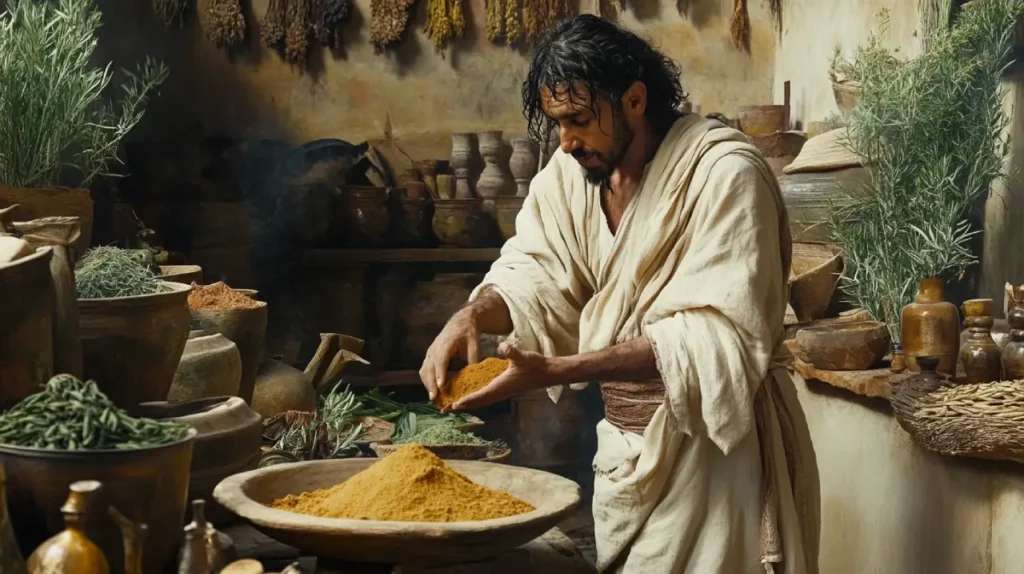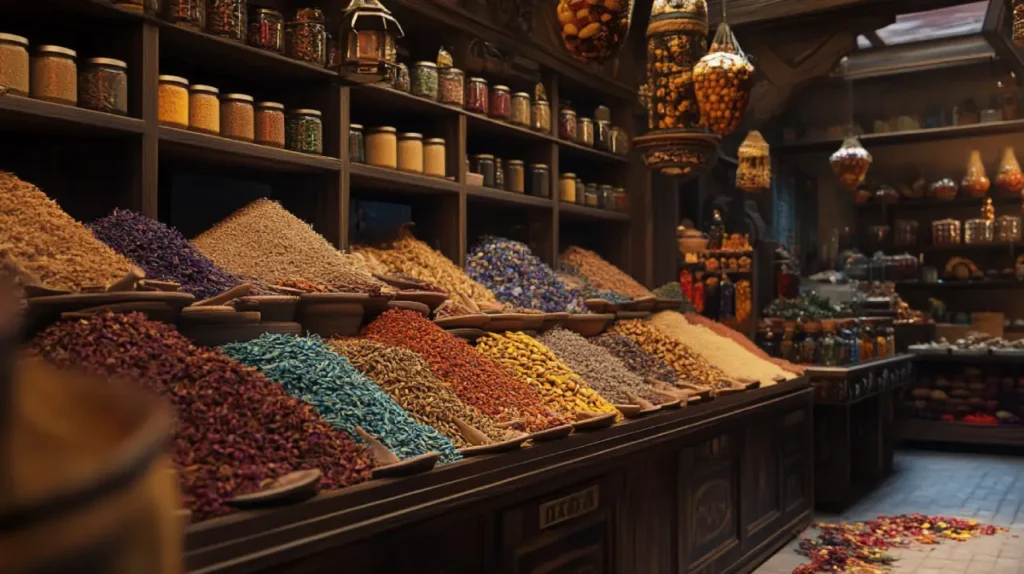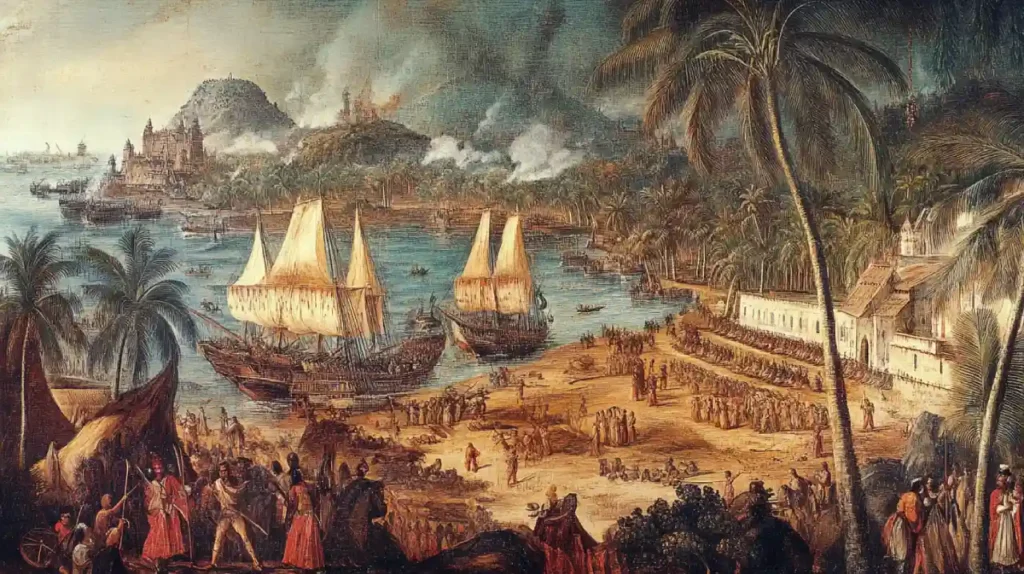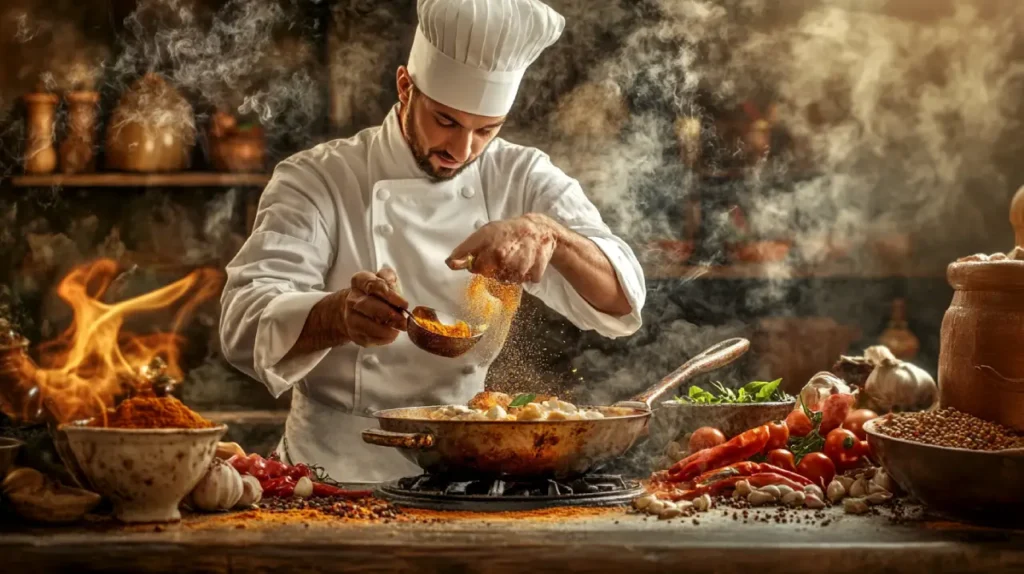Spices have not only defined the way we eat but also reshaped the course of human history. From ancient Egypt to the modern-day kitchen, their value has transcended culinary use—serving as medicine, religious offerings, and even currency. The global spice trade laid the foundation for vast empires, sparked naval exploration, and fueled colonial conquests. Today, understanding the historical journey of spices offers insight into the evolution of global cuisine and the complex interplay between flavor, commerce, and power.
Early Use of Spices in Ancient Civilizations

The earliest documented use of spices dates back over 5,000 years. Archaeological findings in the Middle East and South Asia have unearthed remnants of spices like garlic, coriander, and turmeric in ancient cooking pots and burial sites.
In Ancient Egypt, spices were integral to religious rituals, embalming, and early pharmacology. The Ebers Papyrus (c. 1550 BCE), one of the oldest preserved medical documents, details over 700 substances, including anise, saffron, and coriander, with medicinal applications. Egyptian trade expeditions, such as those to the Land of Punt, sought exotic spices and incense, highlighting their ceremonial and economic value.
In India, a civilization deeply intertwined with spices, the Vedas (c. 1500 BCE) document the culinary and spiritual use of spices like black pepper, turmeric, and cardamom. Ayurveda, India’s ancient system of medicine, codified spices based on their effects on the three doshas—Vata, Pitta, and Kapha—linking food to holistic health.
Chinese records, notably the Shennong Bencao Jing (Divine Farmer’s Materia Medica), emphasize spices like ginger and star anise for balancing qi and treating common ailments. The medicinal philosophy of the East often blurred the line between food and therapy, embedding spices into daily life and ritual.
Read also: Asia: 6 Unforgettable Places to Visit for Cultural Destinations
The Rise of the Spice Trade

The spice trade is among the earliest examples of global commerce. Spices were compact, non-perishable, and high in value—making them ideal trade goods. By 2000 BCE, spice routes connected Asia with the Mediterranean, forming the foundation of the Silk Road and maritime trading hubs.
Arab traders dominated these early networks, particularly those involving the transport of cinnamon and cassia—highly prized in the Greco-Roman world. To preserve trade monopolies, intermediaries often fabricated tales about spice origins, claiming that cinnamon was harvested from nests guarded by giant birds or that pepper grew in snake-infested lands.
Roman texts, especially those of Pliny the Elder, criticize the extravagant use of eastern imports, noting that India drained Rome of its wealth. Nevertheless, by the 1st century CE, Indian ports like Muziris thrived under Indo-Roman commerce, with ships regularly sailing via the Red Sea route.
Europe’s Obsession with Spices

By the late Middle Ages, spices had become essential to European life—not only for enhancing culinary flavor but also for preserving meat, masking spoilage, and signifying status and sophistication. Wealthy households showcased their spice collections much like art or jewelry. A pound of nutmeg in the 15th century could cost more than a cow, and cloves were locked in safes alongside gold.
This intense demand for spices had far-reaching economic and cultural consequences. Not only were spices central to medieval medicine and the apothecary trade, but they were also believed to have mystical properties, capable of warding off disease or enhancing virility. The medical community promoted spices as digestive aids and antiseptics, aligning them with the theory of humors that governed medieval health practices.
As appetite for these exotic flavors increased, so too did the geopolitical stakes. European monarchs grew increasingly frustrated by their dependence on Muslim and Venetian traders who controlled overland and eastern Mediterranean routes. This economic bottleneck inspired the onset of the Age of Discovery, a transformative era that would forever alter the course of global history.
Portugal and Spain, the leading naval powers of the time, launched expeditions aimed at discovering direct sea passages to spice-producing lands. Vasco da Gama’s historic voyage to Calicut in 1498 opened maritime trade between Europe and India, bypassing entrenched intermediaries and disrupting centuries-old trade networks. This singular voyage dramatically shifted the global spice economy.
Meanwhile, Christopher Columbus, commissioned by the Spanish crown, sought an alternative route to the Indies by sailing westward. Although he failed to reach Asia, his landing in the Americas brought unexpected botanical discoveries. He returned not with black pepper, but with chili peppers, vanilla, and allspice—ingredients that would later redefine European cuisine and drive entirely new trade routes. His voyage underscored how spices were not only economic commodities but also agents of agricultural exchange and culinary evolution.
This period marked the beginning of a spice-fueled race among European empires, each striving to carve out dominance over valuable spice-producing territories. The stage was set for a century of aggressive expansionism, marked by profit motives and violent encounters.
Colonialism and the Spice Wars

The 17th century brought an even more aggressive escalation in the global struggle for spice dominance. As maritime empires solidified their naval prowess, commercial and political interests intertwined to give rise to two of the most powerful corporate entities in history: the Dutch East India Company (VOC) and the British East India Company. These companies were more than trading outfits—they functioned as sovereign entities, capable of waging war, levying taxes, and seizing lands.
The VOC, with backing from the Dutch government, focused its operations on Southeast Asia, particularly the Banda Islands, the world’s sole source of nutmeg and mace at the time. These two spices were among the most hotly contested of the era, valued not just for their culinary uses but also for their perceived medicinal and preservative qualities. Nutmeg was believed to cure the plague and promote digestion, while mace was used to flavor sausages, preserve meats, and treat ailments. Other highly contested spices included cloves, primarily grown in the Maluku Islands (or Spice Islands), cinnamon from Ceylon (modern-day Sri Lanka), and black pepper, widely cultivated across the Indian subcontinent, especially in Kerala.
Seeking to monopolize these highly profitable spices, the Dutch launched a brutal campaign. In 1621, they massacred or expelled most of the native Bandanese population and installed a plantation system reliant on enslaved labor. Historian records estimate that over 90% of the original population was either killed or displaced. The Dutch then imposed strict controls over cultivation and trade, destroying trees in rival-controlled territories to ensure market scarcity and maintain high prices.
This violent conquest culminated in a remarkable geopolitical transaction: the Treaty of Breda in 1667. As part of this treaty, the Dutch ceded the island of Manhattan to the British in exchange for control of Run Island, a tiny nutmeg-producing isle. The exchange reveals the extraordinary value placed on spices in early modern geopolitics—nutmeg was, quite literally, worth an island that would become one of the most iconic cities in the world.
Meanwhile, the British East India Company expanded its influence across the Indian subcontinent, controlling the cultivation and export of black pepper, cardamom, and ginger. These spices were grown extensively in the Western Ghats and were deeply embedded in South Indian culinary traditions long before British intervention. While less immediately violent than their Dutch counterparts, the British imposed commercial monopolies that deeply disrupted indigenous economies, altered land-use patterns, and laid the groundwork for colonial subjugation.
These “Spice Wars” did more than enrich European powers—they reshaped global political boundaries, decimated local populations, and embedded systems of economic extraction that persist in various forms today. The spice trade helped finance European imperialism and justified the colonization of vast swaths of the non-Western world under the guise of commerce.
As historian Matthew Restall notes in Seven Myths of the Spanish Conquest, these expansions were accompanied by narratives that romanticized conquest while obscuring the violence and exploitation that underpinned the spice economy. Spices, in this context, were not mere ingredients—they were instruments of empire, culture, and control.
Spices in Modern Culinary Culture

In today’s kitchens, spices are not merely accents—they are central to culinary identity, innovation, and cultural storytelling. They carry the weight of tradition, act as tools of creativity, and help chefs communicate emotion and heritage through flavor. From street food stalls in Southeast Asia to Michelin-starred kitchens in Europe, spices shape the nuances of cuisine and reflect centuries of migration, trade, and personal legacy.
Spices are used not only to define regional flavor profiles but also to evoke specific memories and emotions. A whiff of toasted cumin can transport one to a Moroccan souk, while the scent of cardamom may evoke childhood kitchens in Kerala or the Middle East. In this way, spices function as culinary time machines, enabling chefs to bridge the past and present.
Chefs like Yotam Ottolenghi and Samin Nosrat have been instrumental in championing spice-forward cooking. Ottolenghi’s cookbooks emphasize Levantine and Mediterranean blends such as za’atar, baharat, and sumac, which bring balance and brightness to dishes. Nosrat’s foundational work, Salt, Fat, Acid, Heat, redefines the role of spices by highlighting their function not only as flavoring agents but also as structural elements in the architecture of great cooking.
Culinary historian Harold McGee, in On Food and Cooking, underscores that spices don’t merely contribute taste—they stimulate memory and perception. “Spices stimulate multiple sensory pathways… their appeal lies as much in aroma and anticipation as in taste,” he notes. This multi-sensory experience is part of what makes spices indispensable in both professional and home kitchens.
The resurgence of interest in ancestral and indigenous spice traditions marks another important shift. Many chefs are returning to their roots, exploring how their ancestors used spices for healing, celebration, and spiritual rites. Dishes are increasingly being informed by ethnobotanical studies and oral histories, enriching menus with cultural significance. Spices like turmeric, ashwagandha, or fenugreek are being reevaluated not only for their culinary uses but for their medicinal and symbolic roles in diasporic narratives.
This movement bridges fine dining with culinary anthropology, offering chefs and diners alike the opportunity to engage more deeply with the origins of their ingredients. It challenges the notion of spices as simply exotic imports and instead frames them as essential carriers of identity, resistance, and continuity. In this evolving culinary landscape, spices serve as both the medium and the message.
Read also: Sustainable Dining: Eco-Friendly Restaurants In The World
The Legacy of the Spice Trade Today
Today’s global spice industry reflects both opportunity and challenge. The market exceeds $15 billion annually, with turmeric, ginger, and cardamom leading demand spikes due to their health benefits.
Yet behind this boom lies complex supply chains, often marred by labor exploitation, land degradation, and unfair trade practices. Reports by Fair Trade International and The Guardian have highlighted wage disparities and unsafe conditions among spice farm workers, particularly in Madagascar and India.
Transparency initiatives and certifications (e.g., Fair Trade, Organic) aim to rectify these issues, encouraging responsible sourcing and sustainability. Culinary schools and chef associations are also increasingly incorporating ethics into their curricula, promoting ingredient provenance alongside flavor.
Moreover, the conversation around spices has evolved beyond taste—embracing climate adaptation (as spice-growing regions face drought and disease), indigenous rights, and culinary justice. Spices, once symbols of luxury, are now sites of advocacy.
Summary
To understand spices is to understand human ambition, adaptation, and appetite. They are more than ingredients—they are historical artifacts, economic drivers, and cultural messengers. From ancient burial chambers to the shelves of Michelin-starred kitchens, spices have continuously evolved with human civilization, carrying with them stories of power, trade, migration, and resilience.
Spices have shaped not only what we eat, but how we perceive health, status, and identity. The global journeys of spices—across deserts, oceans, and empires—reflect the expansion of human knowledge and the complexity of cultural exchange. Their legacy is embedded in rituals, medicine, economics, and diplomacy.
For chefs, restaurateurs, and food lovers, the story of spices adds depth to every dish and authenticity to every kitchen. A sprinkle of cinnamon, a pinch of saffron, or a crack of black pepper is more than just a sensory experience—it is a bridge between past and present, tradition and innovation. Spices remind us that flavor, like history, is never neutral—and every ingredient carries a tale worth telling.


